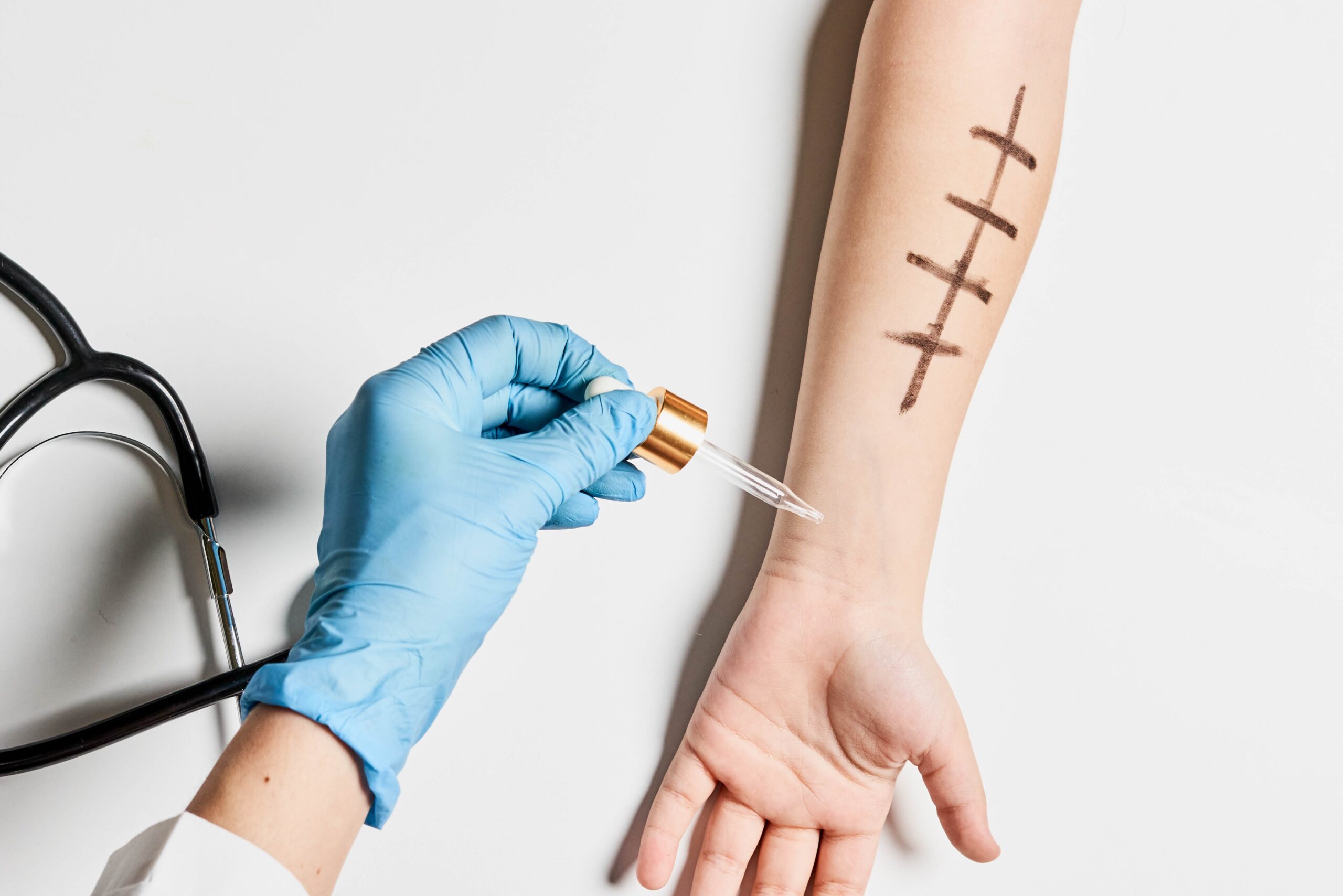SKIN TESTS
The skin tests play an important role in the diagnosis of allergic diseases, being a sensitive and simple tool in daily clinical practice.
They are characterized by:
- their ease and speed of performance,
- low cost, and
- high sensitivity
Therefore, they are considered the most appropriate method for the identification of the responsible allergens in allergic diseases, always in combination with a detailed history and clinical examination.
The skin tests are of three types:
- skin prick tests (SPT),
- intradermal tests (ID), and
- atopy patch tests (APT)
- Skin prick tests (skin prick tests)
- Intradermal tests
- Atopy patch tests
Drops of specific allergen extracts are placed on the anterior surface of the patient's forearm and/or back, with a distance of about 2-3 cm between them. This is followed by a small skin prick with a pin/lancet through the drop.
If within 15-20 minutes there is a localized bump, redness and itching at the site of the bump, the test is considered positive. This is a mild local reaction, resembling a mosquito bite, which resolves within a few hours without leaving any sign. If a test is positive, it confirms that the patient recognizes the substance administered as allergenic and is then classified as sensitized. But be careful! As your allergist will inform you, sensitized does not necessarily mean and allergic!
Nudging tests are used in the diagnosis of:
- respiratory allergy (such as allergic asthma, allergic rhinitis, conjunctivitis),
- food allergy,
- drug allergy; and
- allergy to hymenoptera (i.e. bee/wasp venom).
The extracts contain in diluted form the potential allergen under control, which may be:
- Allergen found in the atmosphere (house dust mites, fungi, tree, weed and other plant pollen, animal epithelia such as cat/dog),
- food (such as milk, egg, nuts, fish, cereals, pulses, etc.), and
- diluted pharmaceutical preparation or hymenoptera venom.
In the diagnosis of food allergy, even pure foods can be used in the prick to prick test. In particular, the doctor first pricks the suspected food with a pin/lancet and then the skin of the subject with the same pin. The results are read back again in 15-20 minutes.
The finger prick tests can be performed at any age, are completely painless and extremely reliable. The only requirement is that the patient has not taken antihistamine medication (and/or other medications such as antidepressants) for about a week, as the test will then show false negative results.
They are performed as a continuation of the scratch tests in drug allergy and hymenoptera allergy. They consist of the administration of a small amount of allergen, always at a specific concentration, just below the superficial layer of the skin as in the test for tuberculosis (Mantoux). The results are usually read in 20 minutes. However, especially for drug allergy, it may be necessary to re-evaluate the results at 48 hours.
They are mainly used in the diagnosis of allergic contact dermatitis but also in specific food allergic diseases, such as eosinophilic oesophagitis and allergic proctocolitis. In this case, a series of small paper discs impregnated with various allergens is placed on the patient's back and fixed with adhesive tape. It remains in contact with the skin for 48 hours and is then removed. The results are read at 48 and 72 hours (in special cases even at 96 hours). Positive tests are those where a mild local reaction is detected (e.g. redness, roughness, infiltration or papules). The patient should not wash the sites where the tests have been applied for at least 72 hours. As a general rule, they should be avoided during the hot summer months, because sweat may detach them and it may not be possible to draw safe conclusions. The choice of allergens to be tested is again based on the detailed history.




